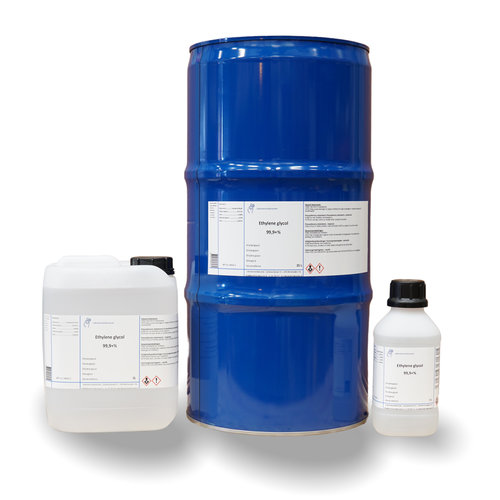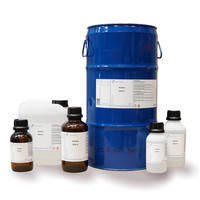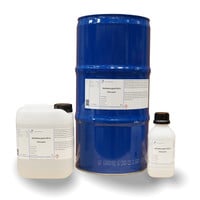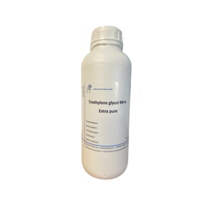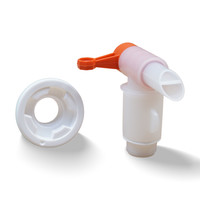You have no items in your shopping cart
Ethylene Glycol 99.9+% Pure
- Buy 2 and save 5%
- Buy 6 and save 10%
What is Ethylene Glycol?
Ethylene glycol or glycol or ethane-1,2-diol is the simplest chemical compound of the glycol family.
The structural formula is HO-CH2-CH2-OH and the structural formula is C2H6O2 (it is the simplest of the diols). Ethylene glycol is commonly used as an antifreeze in automotive coolants. At room temperature it is a colorless, odorless viscous liquid with a sweet taste. Ethylene glycol is toxic and its ingestion requires urgent medical attention.
What is Ethylene Glycol used for?
It was invented in 1928 by I.G. Farben was developed in Ludwigshafen as a frost-resistant coolant for internal combustion engines and sold under the brand name Glysantin.
(Mono)ethylene glycol is currently mainly used for the production of polyester fibers and polyethylene terephthalate, a polyester made from stoichiometric amounts of terephthalic acid and ethylene glycol with a degree of esterification of 100%. 45% of the amount produced worldwide is processed in China.
Due to its hydrophilic properties, it is used as an absorbent for removing water vapor from natural gas and refinery gas or hydrorefining cycle gases. Glycol-water mixtures are used at all commercial airports as a de-icing agent for aircraft and traffic areas.
In research, ethylene glycol is used as a solvent and reducing agent for the liquid-phase synthesis of one-dimensional metal nanostructures.
Buy Ethylene Glycol?
You can buy the best quality ethylene glycol at Laboratoriumdiscounter. Not only competitively priced, but also volume discounts when purchasing different packaging. So order your Ethylene glycol quickly at Laboratoriumdiscounter. Delivered quickly!
Technical information
Empirical formula C2H6O2
Molar mass (M) 62.07 g / mol
Density 1.11
Boiling point (bp) 197 ° C
Flash point (flp) 111 ° C • Melting point (mp) -12.4 ° C
Solubility: 1000 g / l (H2O, 20 ° C)
WGK 1
CAS No. [107-21-1]
EC no. 203-473-3
$$$$$
Hazard statements
H302 Harmful if swallowed
H373 May cause damage to organs (kidney) through prolonged or repeated exposure (after ingestion)
Safety recommendations
Precautions - prevention
P260 Do not breathe mist / vapor.
P270 Do not eat, drink or smoke when using this product.
Precautions - response
P301 + P312 IF SWALLOWED: Call a POISON CENTER or doctor if you feel unwell.


%%%%%
| MSDS Ethyleenglycol (NL) |
| MSDS Ethylenglykol (DE) |
| MSDS Ethylene glycol (EN) |
| MSDS Éthylène glycol (FR) |
| MSDS Etilenglicol (ES) |

